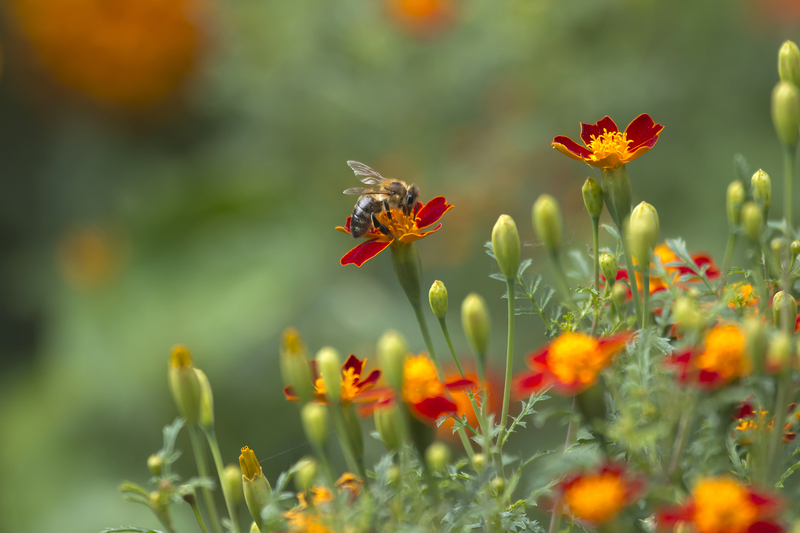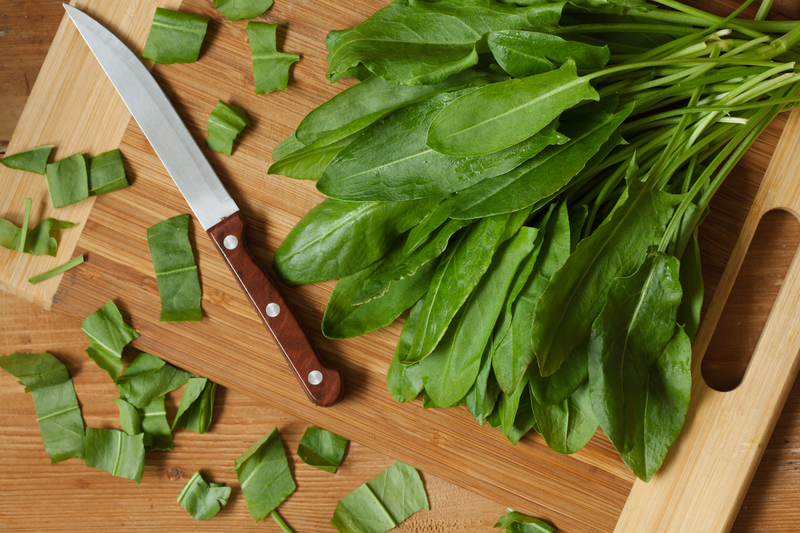Vertical Gardening: Maximizing Greenery in Minimal Space
Posted on 26/06/2025
Vertical Gardening: Maximizing Greenery in Minimal Space
Discover the art of vertical gardening and learn how to transform even the smallest spaces into lush, vibrant oases. Whether you're a city dweller with a tiny balcony or a homeowner seeking creative ways to expand your green footprint, vertical gardening offers innovative solutions for every environment. Dive into this comprehensive guide on vertical gardening and explore practical tips, creative ideas, and expert advice to make the most of your available space.
What is Vertical Gardening?
Vertical gardening is a modern horticultural technique that involves growing plants upward rather than outwards. By utilizing walls, trellises, shelves, or specially designed structures, individuals can create lush green displays in the smallest areas, maximizing space without sacrificing beauty or productivity.
- Vertical gardens are also known as living walls or green walls.
- These gardens can be created indoors or outdoors, for aesthetic or food production purposes.
- Vertical gardening is ideal for urban environments with limited horizontal space.

Benefits of Vertical Gardening
Maximizing Greenery in Minimal Space isn't just visually appealing--it's packed with practical advantages:
- Space Efficiency: Grow more plants in less area, perfect for apartments, balconies, and small yards.
- Improved Air Quality: Plants help filter pollutants and improve oxygen levels inside and outside.
- Thermal Insulation: Living walls act as natural insulators, helping regulate indoor temperatures and reduce energy costs.
- Noise Reduction: Dense plantings can absorb and block noise, creating tranquil green retreats in the city.
- Enhanced Privacy: Green barriers block unwanted views and add natural screens to patios and balconies.
- Increased Crop Production: More growing surfaces mean higher yields per square foot, ideal for homegrown herbs and vegetables.
- Decor Benefits: Vertical gardens can transform boring walls into enchanting focal points.
Environmental Advantages
The environmental impact of vertical gardening is significant. By increasing plant surface area, vertical gardens help combat the urban "heat island" effect, create habitats for pollinators, and promote urban biodiversity. They also contribute to rainwater management by absorbing excess runoff.
Popular Methods for Vertical Gardening
There are numerous vertical gardening techniques available, making it easy to find one that fits your space, style, and experience level. Here are the most popular vertical gardening solutions:
1. Wall-Mounted Planters
Wall-mounted gardens use hooks, shelves, or pocket systems to hold containers vertically against a wall. Materials can range from sturdy wooden panels to upcycled pallets and felt fabric pockets. These are suitable for both indoor and outdoor spaces, letting you display flowers, herbs, and even small vegetables.
2. Pyramid Planters and Tiered Stands
Pyramid planters offer a stepped design for stacking multiple plant containers. Each tier receives ample sunlight and airflow. These are perfect for patios, balconies, and backyards where ground space is scarce but height can be utilized.
3. Trellises and Climbing Structures
Some plants--like beans, peas, and cucumbers--naturally climb. By installing trellises, cord systems, or obelisks, you can train vining plants vertically. This method is especially effective for maximizing food production in vegetable gardens.
4. Living Art and Moss Walls
For high-impact design, many gardeners install artistic green walls that integrate various plant species and textures. Moss walls are particularly popular indoors for their low maintenance and contemporary appeal.
5. Hydroponic Vertical Gardens
These systems use water instead of soil to deliver nutrients, often in stackable or modular columns. Hydroponic vertical gardening is efficient for quick-growing greens and herbs, offering high yields with minimal mess.
How to Start Your Own Vertical Garden
Ready to bring nature upward? Follow these essential vertical gardening steps for successful results:
1. Assess Your Space
- Measure available vertical height and width.
- Consider light exposure--most edible plants need at least 4-6 hours of direct sun.
- Identify surfaces (walls, railings, fences) that can support weight and moisture.
2. Choose the Right Structure
- Decide between wall pockets, shelves, trellises, or freestanding towers.
- Factor in the need for waterproofing to prevent moisture damage to walls.
- Consider materials--wood, metal, recycled plastics, or fabric-based systems are all popular.
3. Select Suitable Plants
Plant selection is crucial to the health, aesthetics, and productivity of your garden. For vertical gardening in limited space, opt for:
- Trailing and cascading plants (ivy, philodendron, pothos).
- Herbs (basil, mint, thyme, oregano, parsley, chives).
- Compact vegetables (lettuce, strawberries, cherry tomatoes, chili peppers).
- Succulents and cacti for dramatic designs in sunny, dry spots.
- Ornamental flowers (petunias, pansies, begonias).
Tip: Group plants by water and light requirements for easier care and optimal growth.
4. Prepare Soil and Ensure Proper Watering
- Use high-quality, well-draining potting mix formulated for containers.
- Consider a built-in drip irrigation system, especially for larger or hard-to-reach gardens.
- Regularly check soil moisture, as vertical planters may dry out faster than ground beds.
5. Install and Plant
- Secure your chosen structure to a stable support.
- Arrange plants with shorter/denser varieties at the top and trailing varieties toward the bottom for visual impact.
- Don't overcrowd--allow airflow to help prevent disease.
6. Maintain Your Vertical Garden
- Fertilize regularly, but avoid excess--container plants can be sensitive to overfeeding.
- Prune regularly to keep plants healthy and encourage bushy growth.
- Inspect for pests and diseases; treat promptly with natural solutions where possible.
- Refresh soil and plants periodically for maximum vibrancy.
Creative Ideas for Vertical Gardening in Small Spaces
Let your imagination soar with these unique vertical gardening ideas tailor-made for compact spaces:
- Hanging shoe organizers as herb gardens: Each pocket is perfect for a different herb.
- Repurposed wooden pallets planted with strawberries or salad greens.
- PVC pipe columns painted for an artistic display of succulents or lettuce.
- Mason jar wall gardens for kitchen herbs--ideal for snipping flavor right into your cooking.
- Recycled plastic bottles cut and mounted in rows for colorful flower or veggie displays.
- Expandable trellises adorned with morning glories or climbing beans on the balcony.
- Attaching modular felt pockets to living room walls for a dramatic green statement piece.
Best Plants for Vertical Gardens
Some plants shine in vertical conditions. Here's a curated selection for vertical gardening success:
- Herbs: Basil, parsley, cilantro, thyme, oregano, mint, chives
- Vegetables: Cherry tomatoes, peppers, cucumbers (on trellises), lettuce, spinach, strawberries
- Flowers: Petunias, begonias, pansies, fuchsias, nasturtiums
- Foliage plants: Ferns, pothos, philodendrons, spider plants, ivies
- Succulents: Echeveria, sedum, hens and chicks, jade plant
- Vines: English ivy, morning glory, jasmine
Tip: For indoor vertical gardens, choose plants suited to the light conditions available, such as pothos or ferns for low light, and succulents or herbs for bright spots.
Common Vertical Gardening Challenges (and Solutions)
Like any innovative gardening method, vertical gardening comes with its challenges. Here are typical issues and how to overcome them:
1. Water Drainage
Poor drainage can lead to root rot or fungal diseases. Ensure your planter or structure has sufficient holes, and use a well-draining soil mix.
2. Structural Support
Not all walls are suitable for heavy planters. Use lightweight materials and secure fasteners, especially for installations on balconies or rented properties. Check maximum weight allowances.
3. Sunlight Access
Plants at the bottom of a vertical garden might receive less light. Rotate planters or select shade-tolerant species for lower tiers.
4. Watering Consistency
Vertical gardens often dry out faster due to increased airflow. Consider self-watering systems, or water more frequently but in smaller amounts.
Expert Tips to Maximize Vertical Garden Success
- Plan before you plant: Sketch out your layout and group plants with similar needs together.
- Soil health is key: Refresh potting mix annually and use organic amendments for sustained nutrition.
- Install an automatic irrigation system for low-maintenance care, especially in large or outdoor green walls.
- Use mulch to retain moisture in exposed vertical systems.
- Monitor for pests and promptly remove infested plants to maintain overall garden health.
- Rotate plants seasonally to keep your display looking fresh and ensure soil quality.
For Apartment Dwellers: Indoor Vertical Gardening Tips
Don't let a lack of backyard space stop you from nurturing plants. Here are some tips exclusive to apartment and small-space gardeners:
- Freestanding vertical gardens can be placed by windows or partitions to divide rooms with style.
- Use window-mounted shelves to give sun-loving herbs and vegetables a dose of natural light.
- Install grow lights for areas with insufficient daylight.
- Opt for air-purifying plants like snake plants or spider plants for added health benefits.
- Mount modular planters above kitchen counters for easy access to fresh greens.

FAQs About Vertical Gardening
- Q: Can any plant be grown vertically?
A: While many plants can adapt, those with compact root systems or climbing growth habits do best. Avoid very large or top-heavy varieties in small systems. - Q: How often do I need to water a vertical garden?
A: This depends on the plants and environment. Indoor and outdoor systems with good drainage often need more frequent, lighter watering than ground gardens. - Q: Are vertical gardens expensive to set up?
A: Costs vary. DIY options using upcycled materials can be very affordable, while professional living wall installations are more costly. There's an approach for every budget. - Q: Will vertical gardening damage my wall?
A: Not if you use waterproof backing and stable supports. Always check wall suitability and take precautions before installation.
Conclusion: Greener Living Starts Today
Vertical gardening empowers gardeners of all skill levels to transform ordinary spaces into spectacular green environments, maximizing greenery in even the most minimal areas. Whether you want to grow your own food, enhance your living space, or make a positive environmental impact, vertical gardening is accessible, rewarding, and endlessly customizable. Start small, experiment with different structures and plants, and watch your little patch of nature flourish--upward!
So dream big, think vertically, and turn those blank walls, balconies, or fences into living works of art with the many creative possibilities of vertical gardening!
```
